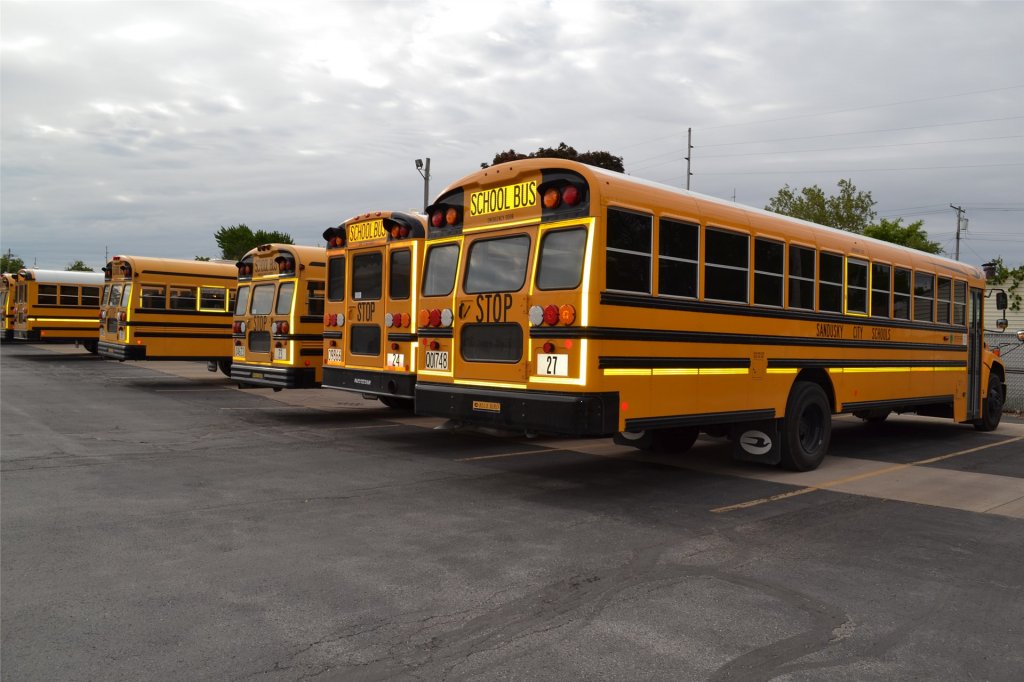School buses. Photo from Sandusky City Schools website.
Ohio’s public school bus drivers are the first school employees many students see every day. These dedicated professionals are the last educators 663,000 Ohio students see as they’re wrapping up their school day, too. School bus drivers are entrusted to get students to and from school safely, but they do so much more than that. They know and care about the students on their buses. They set the tone for the day, so our students can arrive in their classrooms ready to learn.
But, in Ohio, and across the country, there are simply too few bus drivers to fill all the needs, especially when public school districts are required to transport students who don’t go to their schools — sometimes even transporting those private school students to institutions outside the school district boundaries.
This results in much longer routes and much longer rides for public school students who depend on public school transportation to get to school safely.
Ohio’s school bus drivers — including the 1,500 represented by the Ohio Education Association across 115 school districts statewide — see firsthand the toll it takes on students to have to leave for school at 5:30 in the morning and not return home until 5:30 at night, or later, because of the logistical nightmares created by the state law mandating public school districts transport non-public school students, too.
The hardships created by this shortsighted law are felt in school districts across the state. And Ohio can withhold critical transportation funding from districts that simply cannot meet the burdensome requirements to transport private school students to dozens of non-district schools — more than 160, reportedly, in Columbus’ case
This would have dire consequences for a huge number of public school students, who are already being hurt by this unreasonable mandate.
Our state leaders must act quickly to address these issues.
The solution is, in part, a financial one. Adding routes and drivers to transport non-public school students comes at a steep cost, and the legislature must ensure the school districts receive adequate funding to cover the actual costs they are incurring through these mandates. The state must also ensure districts have the resources they need to continue to provide incentives for individuals to become school bus drivers and stay in the profession.
Even with incentives that have already been offered, though, school bus driver recruitment and retention continue to be major challenges for districts across the state. Nationwide there were about 15 percent fewer school bus drivers working last year compared to pre-pandemic levels. This critical shortage has forced a number of Ohio districts to cancel school when there were not enough bus drivers to cover routes.
The state law requiring districts to juggle transportation for non-public school students on top of that is not new, of course. But, the near-universal voucher system created in the last state budget has exacerbated the problem. And, the post-pandemic driver shortages have made the law’s onerous requirements nearly impossible for many public school districts to handle.
Our state leaders must take a long, hard look at that law, and they must, at the very least, grant school districts more flexibility as they continue to do their best to meet everyone’s transportation needs.
If our lawmakers are unwilling to fix the broken system by changing the law, perhaps they should consider completing the training to become school bus drivers themselves. They could have their pick of school districts to work for. I’d say just about all of them are hiring.
YOU MAKE OUR WORK POSSIBLE.

